IN winter time The battery is not enough to maintain a comfortable temperature in the room. Therefore, a variety of electric heaters are used. Currently there is a huge number various types heaters, so people have even more questions about which brand to buy.
Choosing the right energy-saving electric heater for your home
When purchasing a heater, you must first decide which room it will heat, large or small. You should know that for every 1 sq. One meter of area consumes one hundred watts of power. The type of room to be heated also matters. For example, an infrared heater is suitable for heating a bathroom, and for maintaining romantic mood fireplace must be used. Review of energy-saving heaters
Below is a brief overview of heaters that save energy and operate in their own way. different principles work.
1. Quartz economical heating devices. These devices are considered one of the most modern and safe for humans. Their appearance is without features and is presented monolithic slab made from special solution with quartz sand. Its operation depends on electricity. The body is made of a chromium-nickel alloy. Due to good insulation, it interacts well with air.
This heater weighs very little, only ten kilograms. For good heating room, it must first warm up for twenty minutes. If the room is huge, then parallel connection of two or more monolithic quartz devices (MKTEN) may be required. They are equipped with short circuit protection.
2. Ceramic electric heating panel. They are designed to heat living spaces. Compared to infrared heaters, they achieve a high level of heating of almost the entire room, and not just a separate part of it. This heater does not create any radiation or electromagnetic fields, which allows you to purchase the most optimal conditions for a person.
Heats the room very quickly short term. Installing such panels in a residential area practically eliminates the use of conventional heating systems.
Infrared heaters
Infrared heating devices are characterized by the following indicators, namely:
- closest to natural sources of heat and energy;
- effectiveness as a result of use;
- efficiency;
- ease of use.
Consumers recognized this type of heater as the best due to its technical characteristics and ability to transfer heat to objects. There are such infrared heaters, which are located on the wall. They are recommended for use in families with small children.
Safety of infrared heater
Infrared heaters are in great demand among the population due to their effectiveness and efficiency. Infrared heaters operate based on the use of infrared spectral radiation. There are high and low temperature types of heaters. Improper use of this type of heater is very dangerous.
Such devices are installed at the distance recommended by the manufacturer. If you do everything without following the instructions, there is a possibility of getting burns. You also need to know that infrared heaters do not warm up the air, but objects that are nearby. It won’t hurt to leave the room when you turn on the device. The heater should not be left unattended if there are children in the house.
Infrared heater design
This type The heater has the shape of a parabola. The body consists of heat-resistant metal. These devices are closed using special glass or mesh. This is practiced in models that are designed for use in places where parts of the device with high temperatures are touched by people and pets. Depending on the installation method, infrared heaters can be mobile or stationary. This type of heater can operate either from electricity or using a gas flame.
Advantages of energy-saving infrared heaters
The advantages of infrared energy-saving heaters are:
- silent operation due to the absence of a fan that creates noise;
- rapid heating of the surface;
- warming up the air in the room, which starts from the bottom;
- ease of installation and connection;
- a very long period of use of many models;
- the ability to heat only a small part of the room;
- positive impact of minor infrared radiation on human body;
- efficiency;
- very high efficiency (ninety-eight percent).
Quartz economical heaters
Tepleko quartz heater, one of the safest and most economical types of heating, is made from quality material, such as quartz sand. Thanks to quartz sand, the heater received good qualities because it can retain heat long time. The heater is capable of converting almost all electricity into heat.
Thanks to these features, heaters are considered the most economical. You can find TeplEco quartz heaters on the official website.
Ceramic electric heating panel
A ceramic electric heating model is used in devices for electrically heating air for industrial and domestic purposes. Its components are:
- heat-intensive panel with adapted back side special heating element;
- rear and end parts of the electric heating panel;
- polymer thermal accumulating coating;
- rails, with the help of which electric heating panels are attached to a wall fastening element of various designs.
For convector, energy-saving, residential heaters of almost all types, the consumer has only good feedback. This is because they have a large number of pros.
Some of them have quite a lot of power and can be used as the main heating system, others, less powerful, can be used as a supplement for centralized systems heating in kindergartens, hospitals, office premises and so on. When giving preference to convector heaters, you must first pay attention not to their price, but to operating costs. As a rule, savers thermal energy Convector heaters are much more expensive than ordinary ones. But their cost pays off over a short period of time during operation. published
Recently, centralized heating has become increasingly expensive. An alternative to the main heating system of a house or cottage can be a modern heating equipment, for example, energy-saving convector heaters. Electrical devices will help create comfortable climate in the cold season in any room.
Description of the operating principle
A convector is an electrical structure within which an air flow moves through a heating device. Circulation occurs according to the convection principle due to the change of cold and warm air. Passing through the heating element, cold air, expanding and heating, becomes lighter and rises, entering the room.
The next batch takes its place and the process is thus repeated again. This constant circulation ensures uniform heating of the air and allows you to create comfortable temperature V large area premises.
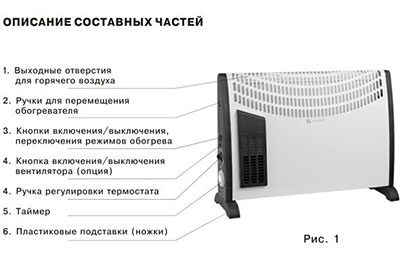 The possibilities for using electric heating convectors are quite wide. They can be used as the main heat in the room, as well as the main device of an independent heating system.
The possibilities for using electric heating convectors are quite wide. They can be used as the main heat in the room, as well as the main device of an independent heating system.
Energy-saving convector heaters pros and cons
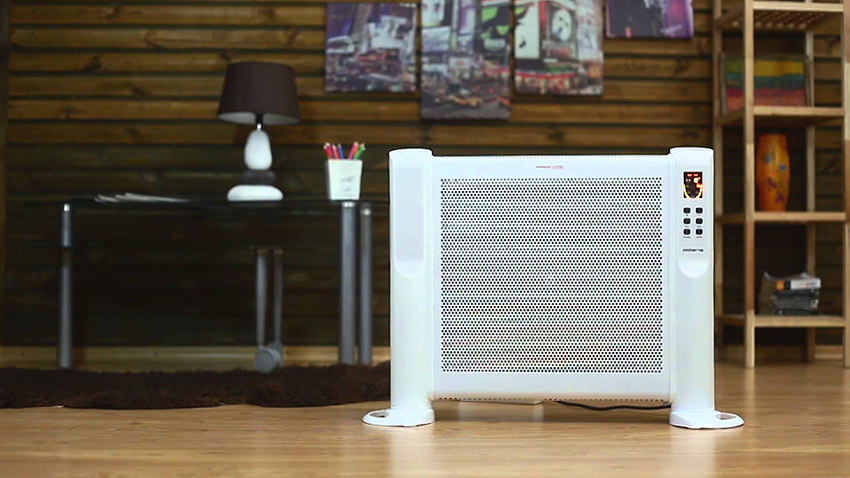 Advantages:
Advantages:
- Convector heaters only heat air during operation. Objects located nearby do not heat up;
- Easy installation and convenient operation process. Electric heaters are very easy to install; you just need to hang them on the wall or put them on the floor and turn them on. In addition, no approvals or permits are required; the location and the device itself are chosen at your own discretion;
- Provide rapid heating of the room and have high heat transfer;
- Safe to use. Electric convectors do not have risk factors such as explosion hazard, open fire, carbon monoxide, which are inherent in other types of heating devices. In addition, convectors are completely electrically safe, have high degree protection against electric shock;
- Do not pollute the air;
- During operation, they ensure absolute silence;;
- Have high level Efficiency All the electricity that is spent goes to heat the air;
- They are characterized by a low heating temperature of the housing. The grille installed in the upper part of the heater body allows you to practically not feel the heating of the device;
- They have small dimensions;
- Frost-resistant;
- During operation, they do not dry out the air and do not reduce oxygen;
- Durable and reliable in use;
- Built-in thermostat allows you to control the temperature and regulate temperature regime. The mechanism automatically turns off the heater when the device reaches a certain temperature, preset. As a result, heat is not wasted and the heater does not overheat. All this time the heater is in standby mode, and as soon as the air cools below the set temperature, the device automatically turns on again;
- The room begins to be heated immediately; no preheating time is required;
- Modern stylish design, you can choose the appearance and model to suit any interior;
- Electric convectors have a low affordable cost;
- They work autonomously and therefore do not require constant monitoring.
The obvious disadvantage of electric convectors is the cost of electricity. If you use an electrical appliance constantly, your energy costs will be high. Therefore, it is recommended to use them as the main heating in rooms with good thermal insulation and low ceilings.
Table of convector heater power and heating area
The area that it can heat depends on the power of the convector.
| Room area (sq.m) | Heater power (W) |
| 5-6 | 500 |
| 7-9 | 750 |
| 10-12 | 1000 |
| 12-14 | 1250 |
| 15-17 | 1500 |
| 18-19 | 1750 |
| 20-23 | 2000 |
Types of convector heaters
Depending on the size and method of fastening:
- Ceiling
- Floor
- Mounted
- Universal
- Built-in
Ceiling
 Ceiling convectors are becoming increasingly popular. Possess high efficiency, durability. They are completely safe and reliable. They are thin heating panels that are mounted on the ceiling. Depending on the power, the device will provide uniform heating of the entire room or a separate designated area.
Ceiling convectors are becoming increasingly popular. Possess high efficiency, durability. They are completely safe and reliable. They are thin heating panels that are mounted on the ceiling. Depending on the power, the device will provide uniform heating of the entire room or a separate designated area.
Most convenient option for the house there will be a ceiling heater with a thermostat that will allow you to control the set temperature.
Floor or baseboard
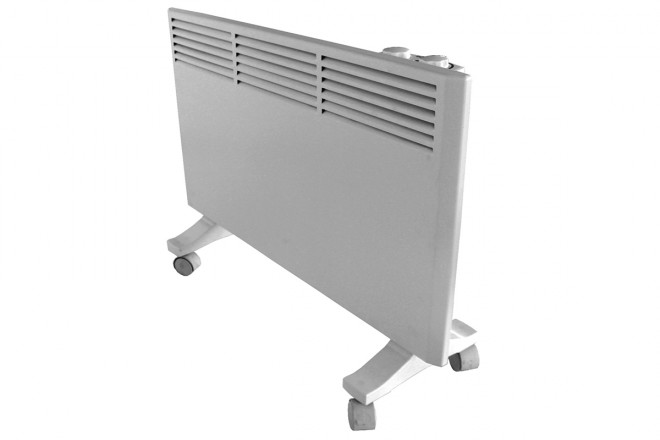 The floor-standing version of the convector can be placed anywhere in the room, which is why it is convenient. The baseboard convector ensures heat distribution more evenly. Since they have an elongated heating element, this allows them to heat the room more quickly and efficiently using less power. Modern look baseboard convector will fit harmoniously into the interior.
The floor-standing version of the convector can be placed anywhere in the room, which is why it is convenient. The baseboard convector ensures heat distribution more evenly. Since they have an elongated heating element, this allows them to heat the room more quickly and efficiently using less power. Modern look baseboard convector will fit harmoniously into the interior.
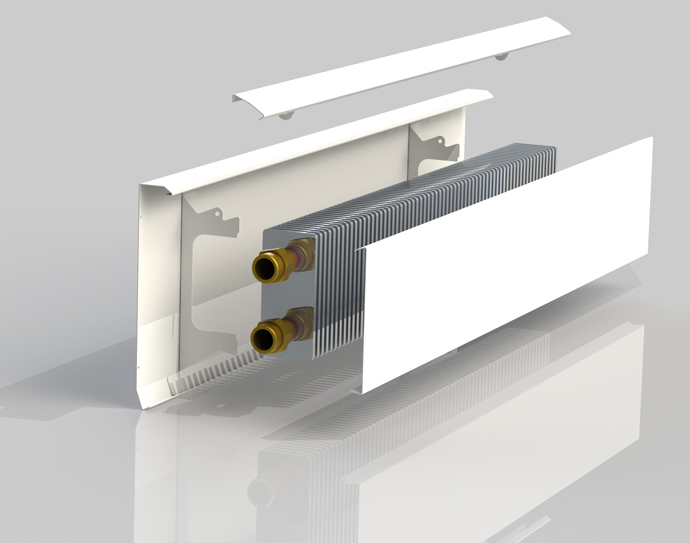 Floor convectors are equipped with wheels or legs; they can be placed anywhere in the room where the power cord can be reached. Such thermal appliances They especially warm the lower layers of air near the floor.
Floor convectors are equipped with wheels or legs; they can be placed anywhere in the room where the power cord can be reached. Such thermal appliances They especially warm the lower layers of air near the floor.
Mounted
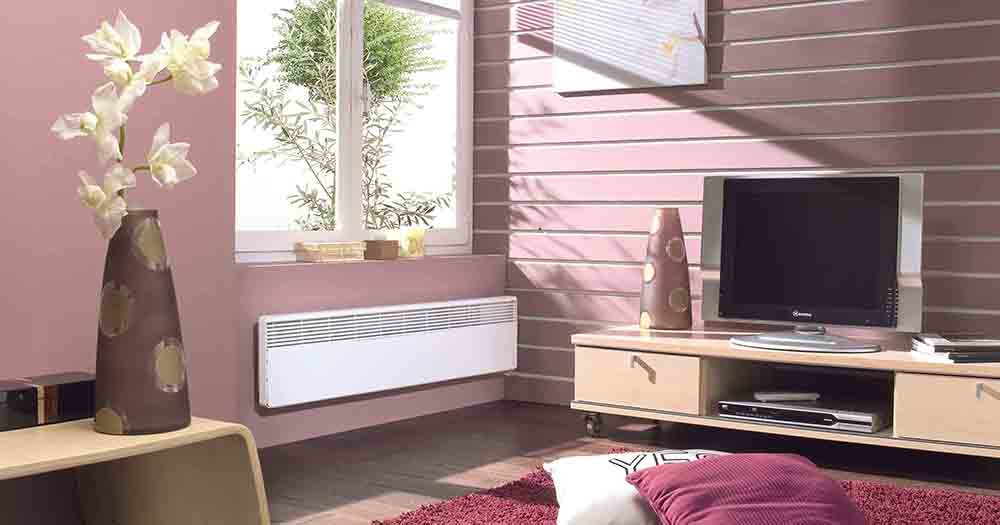 Energy-saving wall-mounted convectors are attached to the wall surface using special brackets. They are in great demand among buyers due to their modern appearance. A wall-hung convector will heat the room faster and more efficiently if the device is not placed high above the floor.
Energy-saving wall-mounted convectors are attached to the wall surface using special brackets. They are in great demand among buyers due to their modern appearance. A wall-hung convector will heat the room faster and more efficiently if the device is not placed high above the floor.
Tip: it is better to install a convection heater under windows or glass display cases. So it will act as a barrier against drafts.
Universal
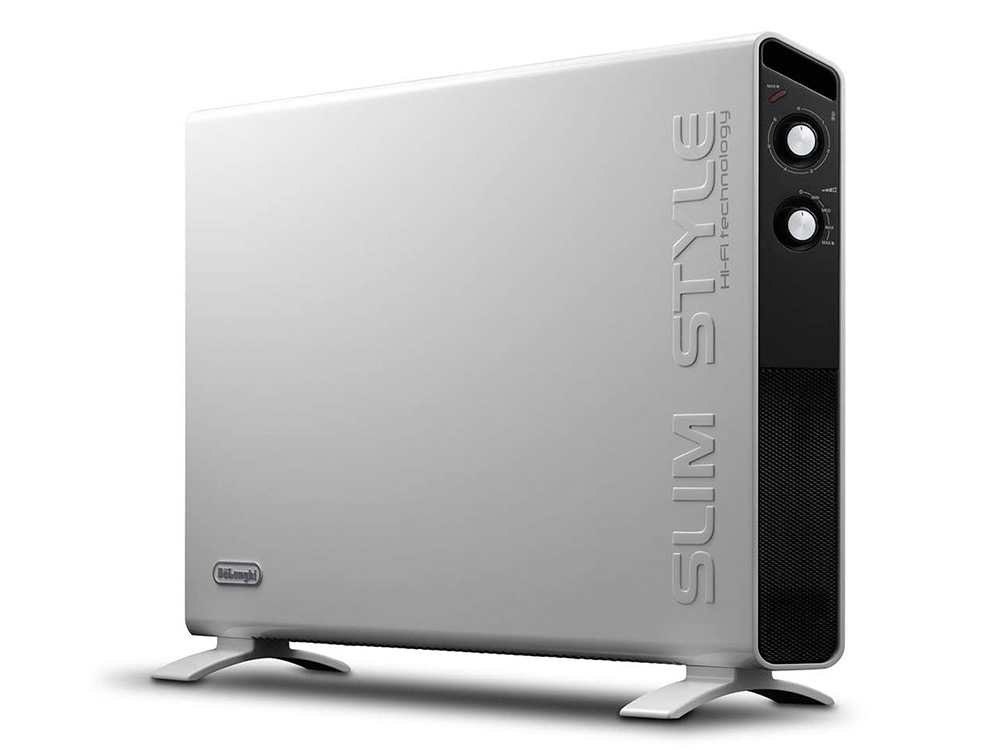 This type of convector comes with various types of fastenings that allow you to hang it on the wall or place it on the floor.
This type of convector comes with various types of fastenings that allow you to hang it on the wall or place it on the floor.
Built-in
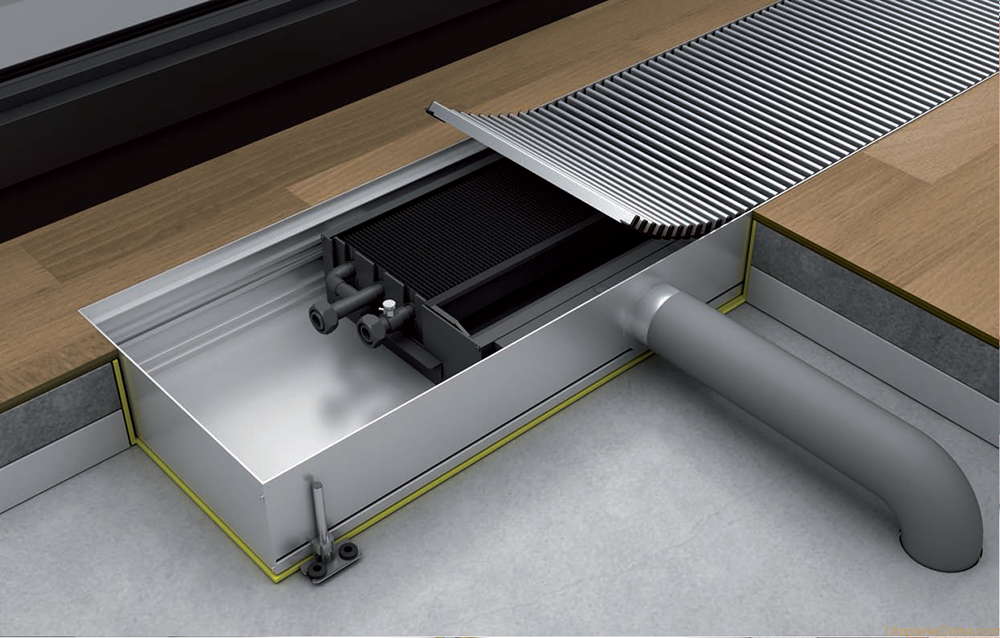 It is possible to have an electric heater built into the floor, but it will be inconspicuous and invisible. The heater is closed on top by a grille, which is located at floor level. This type heating does not clutter up the space of the room, but its location must be taken into account when designing or repairing.
It is possible to have an electric heater built into the floor, but it will be inconspicuous and invisible. The heater is closed on top by a grille, which is located at floor level. This type heating does not clutter up the space of the room, but its location must be taken into account when designing or repairing.
By heat transfer method
Electrical
 Heating convectors electric type quickly and efficiently heat the room without requiring additional devices. The range of these products is modern market very wide. Can be picked up suitable option for every taste, color, design and budget. There are also convectors with additional functions, for example, with an air purification function or remote control management.
Heating convectors electric type quickly and efficiently heat the room without requiring additional devices. The range of these products is modern market very wide. Can be picked up suitable option for every taste, color, design and budget. There are also convectors with additional functions, for example, with an air purification function or remote control management.
Ceramic
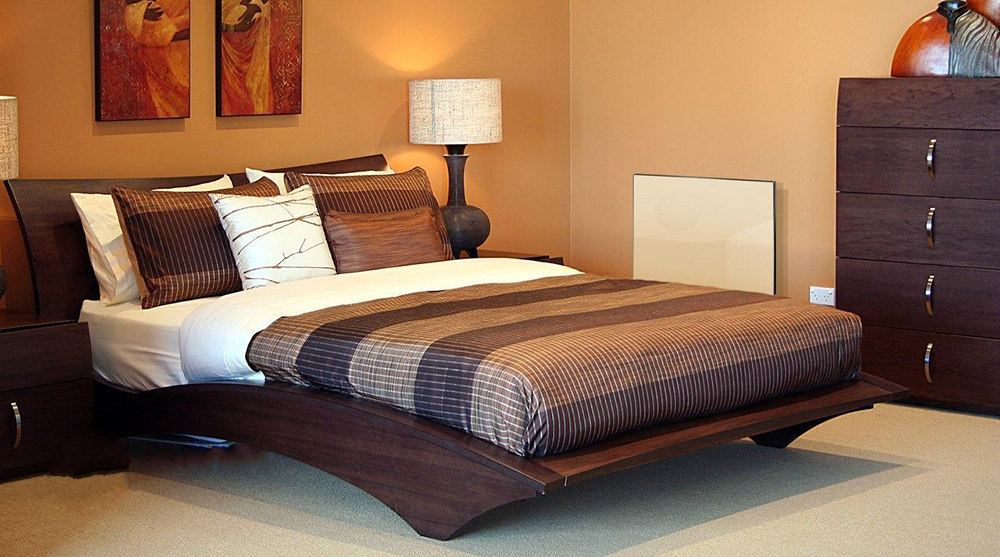 Convectors of this type have a ceramic heating element. By blowing the heating device with a fan, warm air spreads over the entire area. Hence they are also called ceramic fan heaters. They are characterized by a fairly efficient rate of heating the room, without drying out the air. They operate in several modes, including ventilation mode. They do not heat up and are completely safe, so they are available for use in a children's room.
Convectors of this type have a ceramic heating element. By blowing the heating device with a fan, warm air spreads over the entire area. Hence they are also called ceramic fan heaters. They are characterized by a fairly efficient rate of heating the room, without drying out the air. They operate in several modes, including ventilation mode. They do not heat up and are completely safe, so they are available for use in a children's room.
Infrared
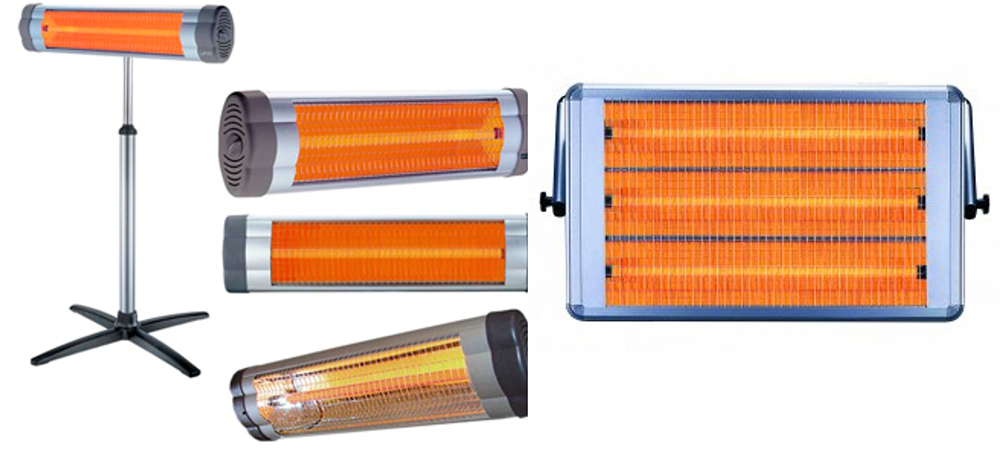 These heaters are equipped with infrared radiation, which transmits heat flow. Thus, infrared heaters provide targeted heat to a specific object. In this case, heating occurs exclusively in the area where the infrared radiation is directed. To warm up a room with such a heater, you need to hang it higher. However, an infrared heater will still not warm up a large area of the room. Therefore, it is not suitable as the main heat supply and warming up the room. An infrared heater is effective when you need to warm up one specific place.
These heaters are equipped with infrared radiation, which transmits heat flow. Thus, infrared heaters provide targeted heat to a specific object. In this case, heating occurs exclusively in the area where the infrared radiation is directed. To warm up a room with such a heater, you need to hang it higher. However, an infrared heater will still not warm up a large area of the room. Therefore, it is not suitable as the main heat supply and warming up the room. An infrared heater is effective when you need to warm up one specific place.
The advantages of infrared heaters are that they do not reduce humidity, do not burn oxygen and carry out partial disinfection of the room, destroying germs and bacteria. It’s not for nothing that infrared radiation is used in medicine.
How to choose a good energy-saving convection heater
 If you decide to buy a convector, you first need to decide and choose the option that suits you. A convection heater is selected to suit the area of the room, taking into account the height of the ceilings. In addition, you should clarify whether the heater will be used as additional heating or as the main source of heat. Also, when choosing a convector, you should pay attention to the type of thermostat. Models with a mechanical thermostat are cheaper than those with an electronic one. Of course, when choosing, take into account the installation method and the rate of air heating.
If you decide to buy a convector, you first need to decide and choose the option that suits you. A convection heater is selected to suit the area of the room, taking into account the height of the ceilings. In addition, you should clarify whether the heater will be used as additional heating or as the main source of heat. Also, when choosing a convector, you should pay attention to the type of thermostat. Models with a mechanical thermostat are cheaper than those with an electronic one. Of course, when choosing, take into account the installation method and the rate of air heating.
Important! When choosing an electric convector, check with the seller to ensure that it is equipped with automatic electrical overheating protection.
Choosing a manufacturer
The leaders in the heating equipment market are manufacturers Zanussi, EWT, LG, Electrolux, Nobo, Toshiba, Panasonic. When choosing a manufacturer, pay attention to the country of manufacture.
Power to suit our needs
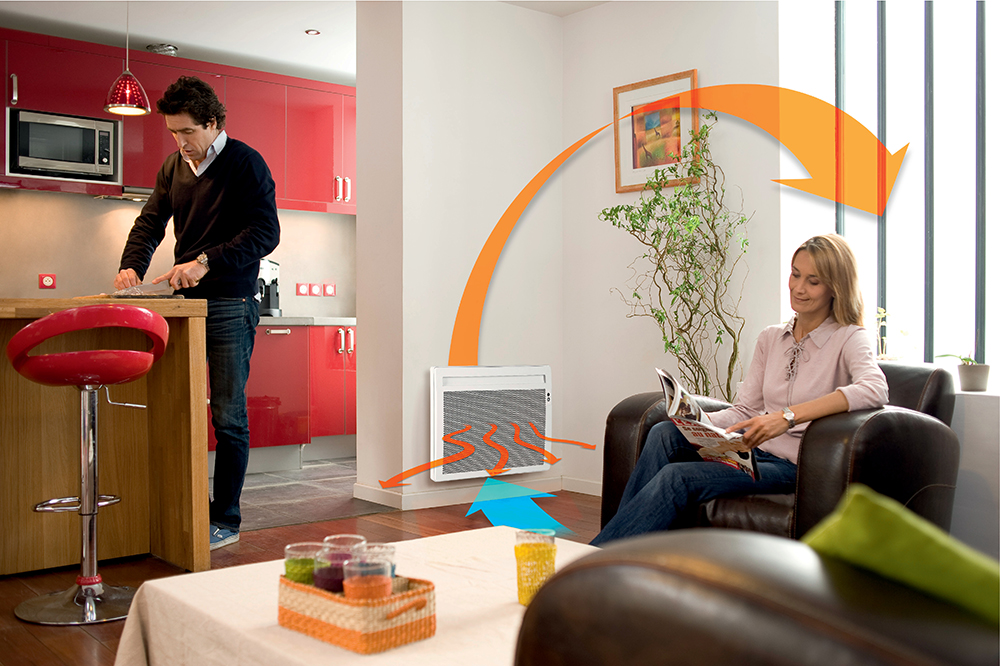 An important characteristic for any heating device is power. The area for which the convector is designed depends on it. To calculate the required heating power, you need to know the area of the room. For each square meter area requires up to 100 W of power. To make the correct calculation, it is necessary to take into account the difference in temperatures inside and outside the room, as well as thermal insulation.
An important characteristic for any heating device is power. The area for which the convector is designed depends on it. To calculate the required heating power, you need to know the area of the room. For each square meter area requires up to 100 W of power. To make the correct calculation, it is necessary to take into account the difference in temperatures inside and outside the room, as well as thermal insulation.
Attention! The worse the room is insulated, the longer it will take to heat up and the faster it will cool down. Pay attention to the insulation of windows and doors.
Prices for convector energy-saving heaters
The cost of electric convectors is affected by specifications, heating efficiency, power and heating area. In addition, the price is greatly influenced by the appearance and design of the device. With a beautiful and modern design, for example with a glass surface, heating device will cost many times more.
Where is it more profitable to buy energy-saving convector heaters?
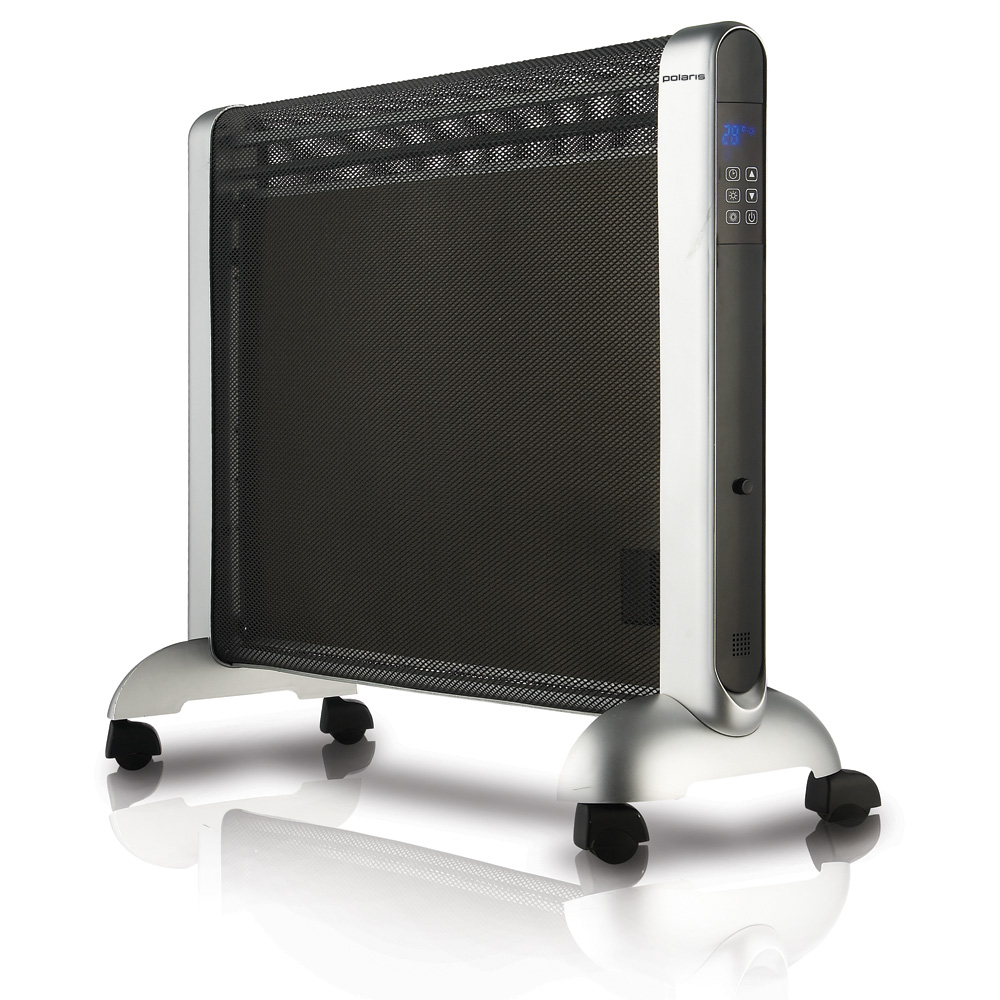 The popularity of convector heating devices has led to the fact that you can buy a heating device anywhere. In addition, manufacturers have increased their range of these products to wide range. This makes it possible to choose a device that suits your needs and financial capabilities.
The popularity of convector heating devices has led to the fact that you can buy a heating device anywhere. In addition, manufacturers have increased their range of these products to wide range. This makes it possible to choose a device that suits your needs and financial capabilities.
Especially big choice presented in online stores where all heating equipment is presented different manufacturers. On the Internet you can find prices and reviews about any model.
The most budget option
The most budget-friendly heating option is the convection method; it is the most profitable and economical compared to other heating technologies. Most a budget option Convector heaters are considered a universal option. Such models are very popular in the heating market.
What users of energy-saving convector heaters say
 Consumers mostly have only good and positive opinions and reviews about energy-saving convector heaters. This is explained by the advantages of this product. These convectors are applicable both in residential and non-residential premises. Suitable for places public use, offices, shops, hospitals, child care facilities. The range is large, so it is possible to choose a model according to your needs and intended purpose.
Consumers mostly have only good and positive opinions and reviews about energy-saving convector heaters. This is explained by the advantages of this product. These convectors are applicable both in residential and non-residential premises. Suitable for places public use, offices, shops, hospitals, child care facilities. The range is large, so it is possible to choose a model according to your needs and intended purpose.
Conclusion
Energy-saving convector heaters are very suitable in cases where it is necessary to provide periodic heating, for example, in a country house. In just a few hours, a convection heater will provide conditions for a comfortable pastime.
By purchasing a convector heater, you will receive an excellent heating device with modern design, silent in operation and uniformly heating the entire room.
Construction or purchase of a private country house is for many residents big cities a dream. After all, every person wants to have their own place for a good rest or permanent residence. The main problem in country houses the heating becomes heating - main gas not present everywhere. The solution is electric, energy-saving wall heaters for the home. Let's see which heaters are best to use to heat your home.
Types of energy-saving heaters
There are many varieties of wall-mounted energy-saving heaters for the home. They differ in their level of efficiency, principle of operation, efficiency and on many other parameters. Considering the abundance of solutions on the domestic heating market, we decided to conduct our own investigation in order to recommend you the most economical options.
Electric heaters for the home, energy-saving, wall-mounted, are divided into the following types:
- Infrared - heat due to infrared radiation;
- Convectors - here the operating principle is to heat the air;
- Ceramic - often have a dual operating principle, depending on the model.
Let's try to understand this equipment and identify the most energy-saving option.
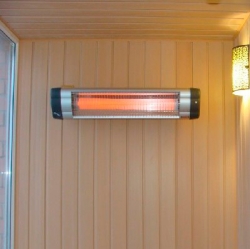
Infrared
Infrared energy-saving heaters for the home work by heating objects using infrared radiation - it reaches furniture, floors, ceilings and other surfaces, causing them to give off heat. The heating is very soft and of high quality, and the abundance of similar heaters on the market allows you to quickly select the most attractive option.
This is approximately how the sun warms our planet - it heats the earth, landscape elements and artificial buildings created by man. As a result, all this begins to release accumulated heat into the air. Infrared heaters heat individual materials to a depth of 2-3 cm, showing excellent results when heating households. There are the following energy-saving home heaters that operate on the IR principle:
- In the form of paintings - these are film heaters that are hung on the walls, in the manner of paintings;
- With a radiating panel - steel or ceramic, they are hung not only on walls, but also on ceilings;
- Halogen and quartz - a special emitting lamp is installed here. These heaters are used for temporary or auxiliary heating;
- Ceramic wall tiles are the most neat and beautiful and come in a variety of colors.
These energy-saving home heaters are good because they provide the fastest heating - infrared radiation spreads instantly, immediately starting to warm up surrounding objects.
Additional energy saving is provided by thermostats that monitor the temperature in the rooms. Selected species heaters with a power of 1 kW can warm up to 12-25 sq. m. of housing.
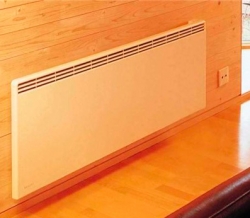
Convectors
Convector energy-saving home heaters are no less common heating equipment than their infrared counterparts. They are characterized by extremely careful execution and can become an excellent replacement classic heating systems With electric boilers and pipes running throughout the house. In this case, we do not need to heat the coolant, which somewhat reduces energy costs by reducing losses.
The operating principle of wall-mounted convection energy-saving heaters for the home is extremely simple. They contain ribbed heating elements that heat the air around them. As a result, it rises up and leaves the radiator. In its place come cold air masses taken from the floors. That is, we observe the air circulation in heated rooms.
Cost-effectiveness is ensured by the absence of the need for additional heating of water, as well as through the use of thermostats. They can be of two types:
- Mechanical - manufactured on the basis bimetallic strip, which controls electrical contacts;
- Electric - work on the basis of electronics.
It is electric thermostats that provide additional savings achieved through more accurate temperature control.
Energy-saving wall-mounted convection heaters for the home can be used for both permanent and temporary operation. If necessary, they are removed and installed on legs, used as additional heating equipment. The same applies to the energy-saving infrared heaters described above.
One of the most glaring disadvantages of energy-efficient convection wall heaters for the home is that they do not perform well in rooms with high ceilings.
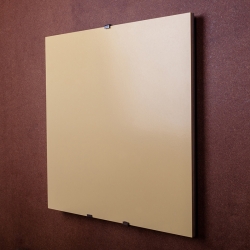
Ceramic
Energy-saving ceramic heaters for the home often operate on a dual principle. That is, they create convection air currents and emit infrared radiation. These devices combine the advantages of both types of heaters, allowing you to effectively heat living spaces. Like convectors, they have great design and can have different colors.
These wall-mounted energy-saving heaters for the home consist of several parts:
- Heating element – provides heating of the entire structure;
- Reflective element – reflects heat in the desired direction (from the wall);
- Ceramic plate – ensures the creation of an infrared stream.
In addition to everything, thermostats are used here to provide temperature control.
Ceramic energy-saving heaters for private homes, made in a wall-mounted design, provide heating of the air, which gradually warms up and rises. In its place from below come already cooled and colder air masses. That is, we are observing the most ordinary convection. In parallel with this, the ceramic plate is heated, which begins to generate infrared radiation.
The dual operating principle ensures:
- Cost-effectiveness of equipment;
- Ability to operate heaters in rooms with high ceilings;
- More fast work, compared to convectors.
They do not dry out the air or change it chemical composition (do not burn oxygen), do not heat up high temperatures, they do not make noise or buzz, and are also characterized by their compactness.
The disadvantage of wall-mounted ceramic energy-saving heaters for the home is their higher weight compared to the same convectors.
To wall electric heaters ceramic type Compact fan heaters mounted under ceilings are also included. They generate a stream of hot air that is discharged into the premises. The disadvantage of such equipment is noise - electric motors with fans are installed inside, which provide forced circulation air masses
We are looking for an economical option
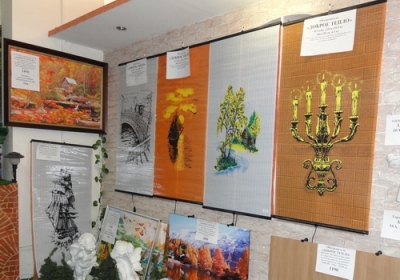
Kind warmth - non-standard, but interesting way heating your home.
When looking for the most economical, energy-saving option, you should pay attention to infrared wall heaters. They will help you improve heating speed by preventing unnecessary energy consumption. Some varieties have a very high level of efficiency - for example, Dobroye Teplo heaters, 50x50 cm in size, have a power of 120 W and can heat up to 10 square meters. m. living space(during the winter season, with the onset of real cold weather, this figure will decrease).
The most economical option would be wall-mounted carbon energy-saving heaters for the home, but they have a drawback - they are poorly suited for long-term heating (not the same range plus glow in the dark). They are best used as auxiliary devices that can be used for temporary heating (for example, when there is not enough constant heating power).
Convectors are recommended for use by those who experience headache when operating infrared wall heaters. In this case, you can choose energy-saving convectors equipped with precise electronic thermostats. We can also recommend infrared-convection devices with a dual operating principle.
Choosing an energy-saving heater
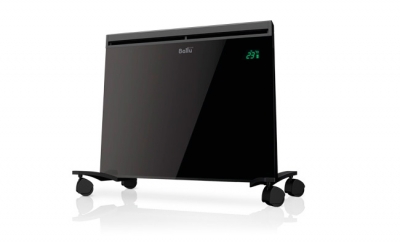
Convector Ballu BEP/EXT-1000 - great option for installation in an apartment or house with designer renovation.
If you need a good energy-saving wall-mounted convector for your home, choose heaters from the manufacturer Ballu. As an example, we can recommend the Ballu BEP/EXT-1000 model. With a power of 1000 W this heating unit capable of heating up to 15 sq. m of living space. There is an information display and an electronic control system on board. Its price is from 3.5 thousand rubles.
An analogue of this device is the Ballu BEC/EZMR-1000 heater. It has the same power, but the price is lower, since it uses simpler mechanical control. We recommend taking the devices from electronically controlled– they are more economical.
Of the infrared devices, it is best to pay attention to the thin and neat Ballu BIH-AP2-1.0. They are suitable for both ceiling and wall installation. The power of the presented device is 1 kW, the heated area is up to 15 sq. m, depending on the air temperature outside the building and other parameters. In addition to the heater, you should purchase an electronic or mechanical thermostat.
The closest analogues both in price and quality are energy-saving infrared wall/ceiling heaters Almak - they are available in several colors at once, thanks to which it is possible to choose optimal model for one or another interior.
Another interesting option– heater Electrolux EIH/AG2-1500E. It works both as a convector and infrared emitter . Thanks to this, it ensures that heat is pumped into the rooms of the house as quickly as possible. The device is equipped with electronic control with a display and light indication, installation options are floor or wall. With a power of 1.5 kW, the heater warms up to 20 square meters. m.
How to install a wall heater
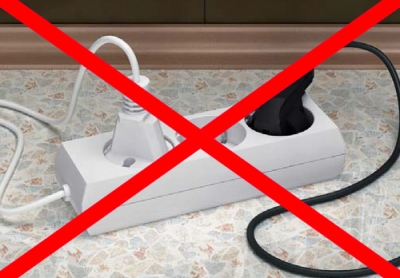
Do not connect heating equipment through an extension cord; use a separate outlet for this.
Installing wall-mounted energy-saving heaters for your home is not difficult. They are hung on brackets, which can be purchased at a hardware store. The typical installation location is under the windows, but there is nothing stopping you from mounting the equipment in any other place, for example, next to the bed or on a blank wall. Some heaters come with mounting brackets included.
To connect to electrical network the most common ones are used electrical sockets. remember, that connection via extension cords is prohibited. Some heaters are connected to the network via contact terminals, without using sockets, which is also very convenient - you just need to connect the wires to the installation site.
Special attention is paid to the installation of thermostats. They should be located at some distance from the heating equipment, which will prevent them from overheating. Thermostats should not be exposed to direct Sun rays– otherwise temperature control will be impaired. Also, thermostats should not be located in the direct radiation zone of IR heaters - overheating of their housings will affect it.
Video
Many today, purchasing country cottage area, are faced with one problem: it is difficult to independently arrange an effective, but at the same time economical heating. It’s difficult because there are a wide variety of devices, systems, boilers, and autonomous heaters on the market. It’s not easy to figure out and choose the most economical heaters for your dacha from the variety offered. That's why short reviews the most good decisions more relevant than ever. In this article we will talk about what technologies exist, what devices you need to pay special attention to, what parameters of heaters are important to consider before purchasing.
Existing energy saving technologies
Modern energy-saving heaters for country houses and country houses are represented by a wide variety of devices. What can you pay attention to?
- To decentralized ventilation systems, helping to ensure that the room is cleaned of contaminated air flow.
- For gas generators.
- On solar collectors and solar power plants.
- Heat pumps, allowing you to receive heat from the bowels of the earth.
- For energy-saving heaters that can operate on different principles.

If the first devices and systems are combined and included in the system " smart home", it will be possible to solve the problem globally. Energy saving heaters They are best suited for those who use their dacha in winter occasionally, from time to time.
Review of energy-saving models
So, on sale are the most different models described devices operating on different principles. Among them special attention deserve:
- Convectors.
- Infrared models.
- Quartz batteries.
- Ceramic panels.
Each type has its own pros and cons of use, so it makes sense to study the main technical specifications each device.
Convectors
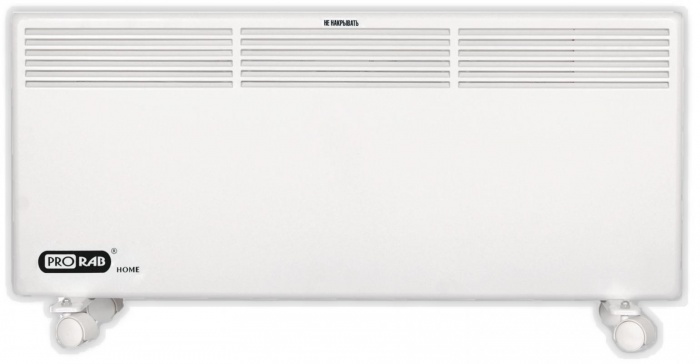
What is a convector? This is an electrical device that operates like an open heating element. The current heats it to a certain temperature. Cold air, passing through it, heats up and rises, cools there and falls down. Cyclic air exchange underlies the operation of the described heater. In order to ensure its efficiency, many manufacturers provide devices with built-in fans. Modern convectors have high heat transfer, they help quickly heat the air, they operate very quietly, one model can be hung on the wall, the other can be removed from the fastenings and simply placed on the floor. And everything would be fine, but there is one drawback: a convector cannot be called an energy-saving heater. It can be considered as a permanent means of heating, but only for small rooms with low ceilings. In other cases, it is better to give preference the following types heating
Infrared devices for the garden
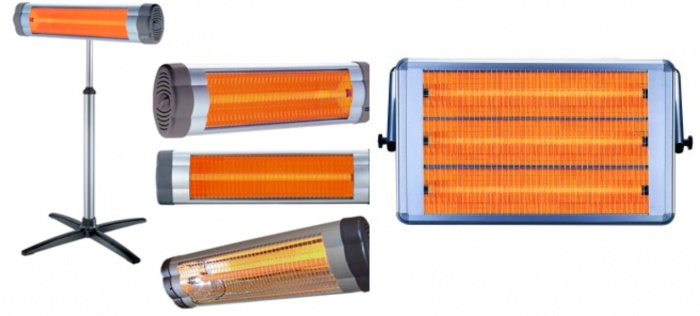
Infrared wall heaters are inexpensive. They work on the principle of heating provided by radiant energy. Infrared waves do not heat the air, like convectors, but the objects in the room. Similar electrical devices They quickly gain temperature, they do not dry out the air, so the heated room will never be stuffy. The described models operate completely silently, while serving for a long time. long term. Infrared heaters can be used to heat small wooden houses. But before you buy similar models the following features must be taken into account:
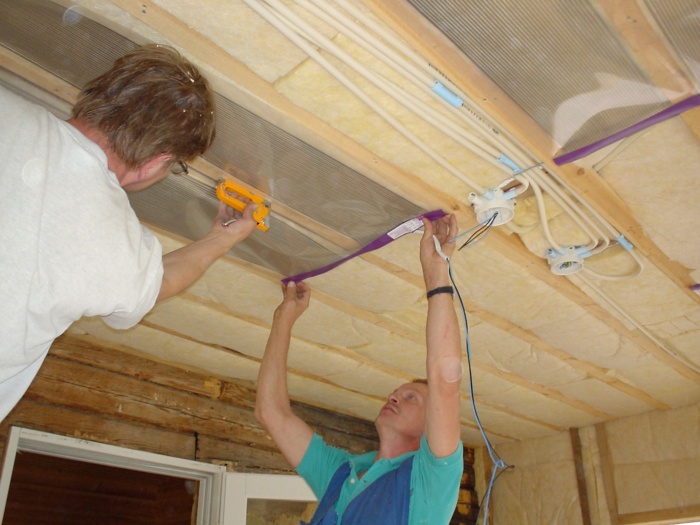
- Firstly, an infrared heater will instantly heat any room in the country house, but it will instantly cool down when the device is turned off.
- Secondly, to create a comfortable atmosphere, you must be able to carefully calculate the power of the device. If it does not correspond to the area of the room (for example, exceeds the permissible values), a person will easily receive deep burns.
- Thirdly, infrared heaters that run on electricity can hardly be called energy-saving. If you want to save money, you should give preference to models running on gas or diesel fuel.
Quartz batteries
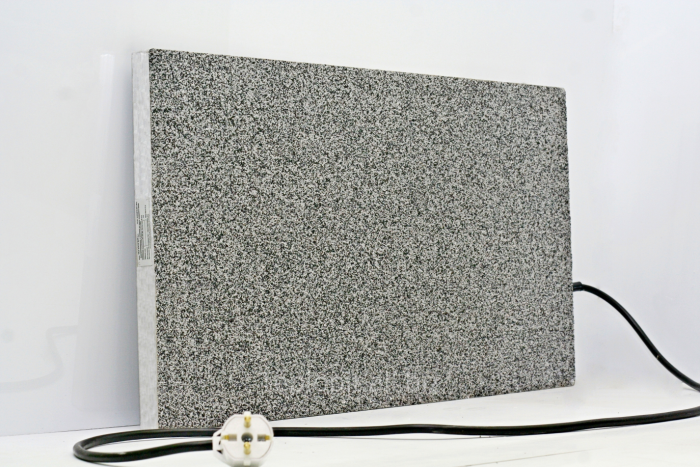
Not long ago, quartz batteries appeared on the heating equipment market. They have quite impressive characteristics, the main ones being Fire safety And economical consumption electricity. What is a quartz heater? This is a device consisting of a monolithic body made on the basis of a solution quartz sand, And heating element, placed inside the housing.
The heating element is made of an alloy of chromium and nickel. It is literally soldered into the body. This design helps heat the outer plate up to 95 degrees. At the same time, the air in the room does not dry out, dust is not burned, which means that in a room that is heated with a quartz heater, the air will always be fresh, and the room will not be stuffy.
Note! The monolithic system does not allow air to approach the heating element of the device. That is why it does not oxidize. This circumstance significantly extends the operating life of the device.
The quartz battery does not heat up quickly. Operating temperature she dials in twenty-five minutes. But such a device is capable of accumulating heat and then gradually releasing it to the room.
If you equip the battery with a thermostat, you can significantly reduce energy costs. The device will turn on itself when temperature indicator will fall and turn off when the device reaches the highest reading.
Each quartz battery consumes approximately 0.5 kW/h, which is several times less compared to conventional electric convectors or oil radiators. A monolithic quartz heater can be used as a main heating device and as an additional heat source. It is mounted on the wall and attached to it using special brackets. It is possible to install a quartz heater on the floor. For heating large room at the dacha it is permissible parallel connection several quartz batteries.
Ceramic panels
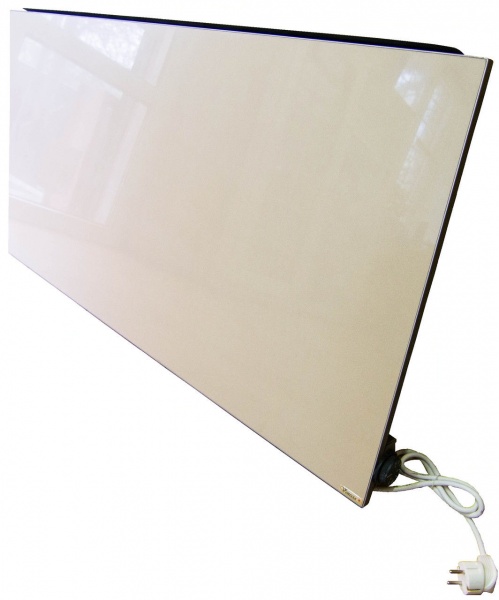
What are ceramic panels? These are devices that combine the operating principle of a conventional convector and an infrared heater. Its action is based on forced convection. Ceramic plates are used as heating elements. When heated, they generate infrared radiation. Depending on which model of ceramic heater is used, the type of heating is determined.
For example, a desktop model generates a directed heat flow. It is capable of heating only those objects that are in the immediate field of its action. A wall-mounted country heater creates a thermal cap; it heats everything that is directly under it. Externally, wall-mounted ceramic heaters are similar to a split air conditioning unit, so they easily fit into modern interiors.
A floor-mounted country heater warms up the air in a room most efficiently. As a rule, it is always equipped with a rotation mechanism, so heat is supplied simultaneously to different corners of the room. Most economical option for a summer residence - ceramic panels with gas connection. Floor samples can heat all rooms in a small cottage at once.
Centralized heating is becoming more and more expensive, which is becoming a significant problem for many owners of dachas, cottages, and small country houses. Modern heating equipment will help solve it - energy-saving convector heaters for the home. If necessary, a heating system of energy-saving convectors can replace the main heating system even over a large area. This is economically beneficial, because similar energy-saving home heaters are slightly inferior gas heating in terms of their performance, but are more profitable in terms of installation price and energy consumption.
 The main design element of a modern electric convector is the decorative body, also known as the convection chamber. Characteristic feature Any type of convector is the presence of special holes in the body. The housings located on top are designed for the exit of heated air from the convector, those located at the bottom of the housing are intended for cold air to enter the convector.
The main design element of a modern electric convector is the decorative body, also known as the convection chamber. Characteristic feature Any type of convector is the presence of special holes in the body. The housings located on top are designed for the exit of heated air from the convector, those located at the bottom of the housing are intended for cold air to enter the convector.
There is a heating element at the bottom of the housing. In energy-saving devices, these elements have good performance in terms of heat transfer and minimal - in terms of electricity consumption.
The heating element consists of a heat sink, a steel tube and a conductive component. The housing has a safety sensor, which automatically turns off the convector in the event of a fire hazard.
In addition to the sensor and thermostat, some convectors are equipped with additional functions and related devices. For example, an ionizer that collects dust flying in the air and saturates it with ions that have a healing effect on the human body.
How does the device work?
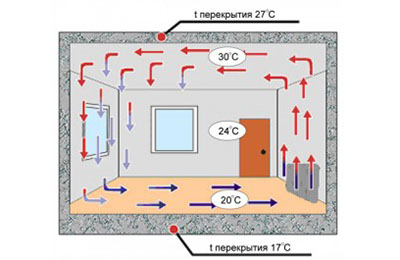 The operation of the convector is based on the movement of air flows inside it- heated and cold (convection principle). Cold air, entering the convector from below, passes through the heating element, while it heats up and expands. In this state, it rises up through the upper holes in the housing and enters the room. Such The operation of the device ensures uniform heating of the air in the room. During operation, convectors heat only the air, and not the objects located next to it.
The operation of the convector is based on the movement of air flows inside it- heated and cold (convection principle). Cold air, entering the convector from below, passes through the heating element, while it heats up and expands. In this state, it rises up through the upper holes in the housing and enters the room. Such The operation of the device ensures uniform heating of the air in the room. During operation, convectors heat only the air, and not the objects located next to it.
On modern models Thermostats are installed that maintain the set temperature. If the air heats above this temperature, the device automatically turns off and is in standby mode. When the air cools below the set temperature, the convector automatically turns on and brings the ambient air temperature to the set values.
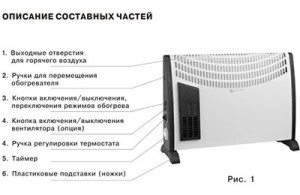
Benefits
- Rapid heating of the room;
- Operational safety;
- Low cost;
- Does not pollute the air;
- Works silently;
- Has a high level of efficiency - 95%.
Types of convector heaters
Depending on the size and method of fastening, convectors are divided into the following types:
- Floor or baseboard heaters (up to 20 cm high). They have their advantages. The dimensions of the heating element of a floor convector are longer than those of tall convectors, and with less power, they heat the room much faster, without being inferior to them in heating efficiency. A floor convector evenly heats the air in the room, especially its lower layers located near the floor. Such systems can be installed in any room, such as residential purposes, and in offices, shops, shopping pavilions.
- Energy-saving wall-mounted or wall-mounted home heaters (height can exceed 40 cm). Such devices are fixed on the surface of the walls with special brackets. Wall convectors are more popular among consumers due to their presentable appearance. They are usually installed permanently under windows, traditional places for installing heating radiators. By installing convectors under windows, they erect a certain effective barrier to the cold air coming from them.
- Universal, with various types fastenings that allow placing convectors on different surfaces. In particular, among them there are energy-saving ceiling heaters for the home.
- Convectors built into the floors are used in rooms with panoramic windows. Such convectors will create a protective thermal curtain from the cold air of large windows.
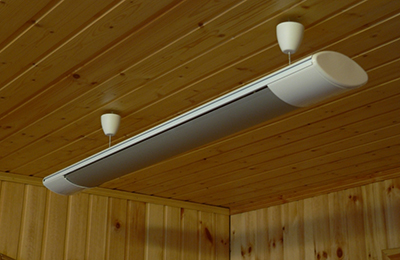 According to the method of heat transfer electric convectors They are divided into electric, ceramic and infrared convectors. The latter provide active heat transfer from the infrared outer panel, which comes to it from the internal heating element. Heat is transmitted in the form of long-wave infrared radiation, which is absorbed by all surrounding objects, but not by air. Energy-saving infrared home heaters resemble a fireplace in their action, when the heater heats objects that release heat to the environment. IR convectors have their advantages:
According to the method of heat transfer electric convectors They are divided into electric, ceramic and infrared convectors. The latter provide active heat transfer from the infrared outer panel, which comes to it from the internal heating element. Heat is transmitted in the form of long-wave infrared radiation, which is absorbed by all surrounding objects, but not by air. Energy-saving infrared home heaters resemble a fireplace in their action, when the heater heats objects that release heat to the environment. IR convectors have their advantages:
- High energy efficiency;
- High degree of safety in operation;
- Quiet operation;
- Easy installation and operation;
- Modern design.
IR convectors are very practical in the bathroom when they are installed on the ceiling. Under the influence of infrared rays, the floor in the bathroom heats up and releases its heat into the surrounding air. With this type of heating, there is no need to install a heated floor.
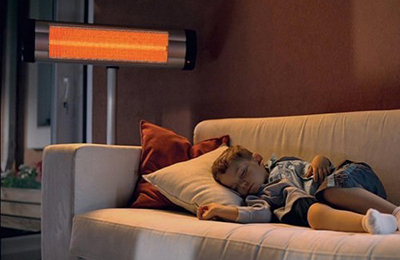 The disadvantages of these designs are few and insignificant.
The disadvantages of these designs are few and insignificant.
Quartz convectors in their design have a heating element as a heating element, which heats the ceramic panel. The advantages of a ceramic heater are that with much less power, and therefore electricity consumption, it is able to heat much large areas than a conventional metal convector.
If there are children in the house, then heating season The air in the house needs to be humidified. Read about.
Additionally, you can learn about air purifiers.
Principles for choosing a device for the home
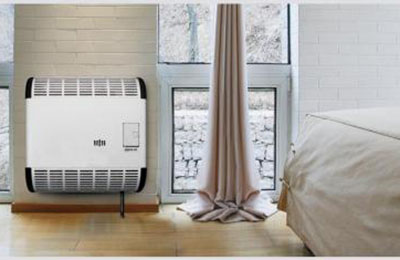 How to choose energy-saving heaters for your home from huge amount presented on the market? This depends on several factors. First of all, you should determine your needs for this device. Heating can be basic or additional for a large living space or a small room.
How to choose energy-saving heaters for your home from huge amount presented on the market? This depends on several factors. First of all, you should determine your needs for this device. Heating can be basic or additional for a large living space or a small room.
In order to calculate the power of a convector for a room, you should keep in mind that per 1 sq. m area should account for 100 W of power.
Therefore, for a room of 12 square meters. m, you will need a convector with a power of 1200 W.
User opinions
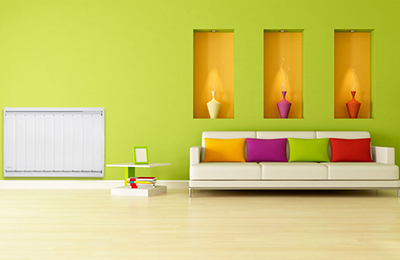 For energy-saving convector home heaters of almost all types, consumers only positive reviews. This is explained by the large number of advantages of this climate control equipment. Some of them have more power and can be used as the main heating; other less powerful ones can be additional for centralized systems in kindergartens, hospitals, offices, etc. When choosing convectors, you should focus primarily not on their cost, but on operating costs. As a rule, energy-saving convectors are slightly more expensive than conventional ones. But their cost pays off within a short period of operation.
For energy-saving convector home heaters of almost all types, consumers only positive reviews. This is explained by the large number of advantages of this climate control equipment. Some of them have more power and can be used as the main heating; other less powerful ones can be additional for centralized systems in kindergartens, hospitals, offices, etc. When choosing convectors, you should focus primarily not on their cost, but on operating costs. As a rule, energy-saving convectors are slightly more expensive than conventional ones. But their cost pays off within a short period of operation.





